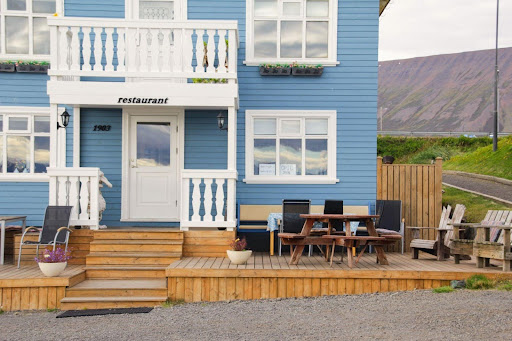Composite decks are a popular choice for many homeowners due to their durability and low maintenance. They offer a sleek, modern look while being resistant to many problems that plague wooden decks. However, they are not completely immune to environmental impacts. Understanding these influences is key to keeping your deck in top shape throughout the year.
In Langley, the weather can be quite variable, with rain, sun, and snow all taking turns to test the resilience of your composite deck. Each type of weather brings its own set of challenges, from promoting mould growth to causing fading and staining. It’s important to be aware of these potential issues so you can address them before they become serious problems.
By taking a proactive approach, you can extend the life of your composite deck and keep it looking great year-round. This guide will help you understand the environmental impacts on composite decks, identify common challenges in Langley, and provide best practices for maintenance. With the right knowledge and care, your composite deck will remain a beautiful and functional part of your home for many years to come.
Understanding Environmental Impacts on Composite Decks
Composite decks are designed to withstand a variety of weather conditions, but they are still affected by the environment. Here’s a look at some of the key environmental impacts you should be aware of:
1. Sunlight: Prolonged exposure to sunlight can cause composite decks to fade over time. While many composite materials are UV-resistant, they are not completely immune to the sun’s rays. Fading can make your deck look worn out and dull.
2. Moisture: Water is a significant concern for composite decks. While composites are more resistant to rot and water damage compared to wood, they can still suffer from mould and mildew growth if water accumulates on the surface. This often happens in shaded or poorly ventilated areas where moisture doesn’t dry quickly.
3. Temperature Fluctuations: Extreme changes in temperature can cause composite materials to expand and contract. This movement can lead to warping or cracking over time if the deck is not installed correctly or if the material is of lower quality.
4. Dirt and Debris: Leaves, dirt and other debris can accumulate on the deck surface. This material can cause staining and promote mould growth, especially if it stays wet.
By understanding these environmental impacts, you can take steps to mitigate their effects and keep your composite deck looking new and strong.
Common Environmental Challenges in Langley
Langley’s unique climate presents several challenges for composite deck owners. Knowing these challenges will help you prepare and maintain your deck effectively:
1. Frequent Rain: Langley experiences a fair amount of rainfall throughout the year. This frequent moisture can lead to mould and mildew growth on your composite deck if not properly managed. Ensure your deck is installed with adequate drainage to help water escape and limit pooling.
2. Snow and Ice: Winter brings snow and ice, which can be tough on composite decks. The freeze-thaw cycle can cause the material to expand and contract, creating stress points that might lead to cracks. Using a good-quality ice melt that is safe for composite materials can help to manage this issue.
3. Humidity: High humidity levels can further encourage mould and mildew growth. Keeping your deck clean and ensuring good air circulation around it helps to prevent these problems.
4. Organic Debris: Falling leaves and other organic materials can pile up on your deck, leading to staining and moisture issues. Regular cleaning, especially during the fall, can help to keep your deck clear of debris and reduce the risk of mould.
5. UV Exposure: Despite the frequent rain, sunny days are part of Langley’s weather, too. UV rays can fade composite decking over time. Using a UV protectant spray specifically designed for composite materials can help maintain the deck’s colour.
By recognizing these local environmental challenges and taking proactive steps, you can significantly extend the lifespan of your composite deck.
Best Practices for Maintaining Composite Decks
Proper maintenance can extend the life of your composite deck and keep it looking great. Adopting these best practices will help you tackle the environmental effects on your deck:
1. Regular Cleaning: Use a mild soap and water solution to clean your composite deck every few months. A soft-bristle brush can help to remove any dirt and debris that may accumulate. Regular cleaning prevents mould and mildew buildup and keeps the surface looking fresh.
2. Immediate Stain Removal: Address spills quickly to avoid stains. Composite materials are resistant to stains, but substances like oil, wine, or BBQ sauce can still leave marks if not cleaned right away. Use a composite-safe cleaner for tough stains.
3. Maintain Proper Drainage: Ensure there’s adequate drainage around your deck. Clearing debris from the gaps between the boards allows water to drain off easily, reducing the chances of mould growth and water damage.
4. Inspect and Repair: Regularly inspect your deck for any signs of damage, such as cracks or loose fasteners. Immediate repairs can prevent minor issues from becoming major problems. Replace any damaged boards to maintain the structural integrity of the deck.
5. Use Protective Covers: During extreme weather conditions, use covers to protect your deck. Furniture covers or tarps can shield the surface from heavy snowfall or direct sun exposure, reducing wear and tear.
Following these maintenance tips ensures that your composite deck remains a durable and attractive part of your home.
Long-Term Solutions for Enhancing Deck Durability
For a long-lasting composite deck, implementing long-term solutions can make a significant difference. Here are some strategies to enhance your deck’s durability:
1. Quality Materials: Investing in high-quality composite materials from the start pays off in the long run. Superior products offer better resistance to environmental factors, reducing the need for frequent repairs.
2. Proper Installation: Ensure professional installation of your composite deck. Proper spacing and secure fastenings allow for natural expansion and contraction, preventing warping and cracking over time.
3. Routine Sealing: Although many composite decks come pre-sealed, applying a sealant regularly can provide extra protection. Look for a sealant designed for composite materials to prolong the life of your deck and enhance its resistance to stains and moisture.
4. UV Protectant: Applying a UV protectant can help to maintain the deck’s colour and prevent fading. This is especially important in sunny areas, where UV rays can be harsh.
5. Seasonal Inspections: Conduct thorough inspections at the start and end of each season. Look for signs of wear and plan any necessary maintenance. Seasonal inspections help you address issues promptly before they become serious.
6. Eco-friendly Solutions: Using eco-friendly cleaning products and materials further enhances the deck’s longevity. These products are less harsh on the deck surface, ensuring that it remains intact and looking good for a longer period.
Implementing these long-term solutions helps to ensure that your composite deck remains a strong, beautiful feature of your home for years to come.
Conclusion
Composite decks bring a combination of beauty and durability to your outdoor living space. Understanding environmental impacts, recognizing local challenges in Langley, and following proper maintenance routines are essential for keeping your composite deck in top condition. Implementing long-term solutions further enhances the deck’s durability, ensuring it withstands the test of time and elements.
At All Hands on Deck, we specialize in all aspects of outdoor living and offer expert advice and services to help maintain and enhance your composite deck. For professional assistance and unparalleled expertise in Langley, reach out to All Hands on Deck today. Make your outdoor space truly remarkable with our help!



Recent Comments